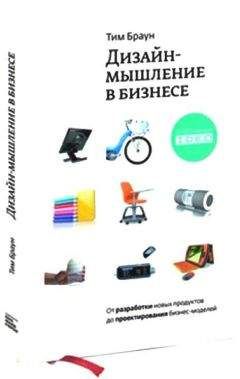Эми Кадди - Присутствие [духа]. Как направить силы своей личности на достижение успеха
233
Seppälä et al., Breathing-based meditation; Bhasin M. K., Dusek J. A., Chang B. H., Joseph M. G., Denninger J. W., Fricchione G. L., Benson H. & Libermann T. A. (2013). Relaxation response induces temporal transcriptome changes in energy metabolism, insulin secretion and inflammatory pathways. PLoS ONE, 8, e62817–e62825; Peters R. K., Benson H. & Porter D. (1977). Daily relaxation response breaks in a working population: I. Effects on self-reported measures of health, performance, and well-being. American Journal of Public Health, 67, 946– 953; Benson H., Wilcher M., Greenberg B., Huggins E., Ennis M., Zuttermeister P. C., Myers P. & Friedman R. (2000). Academic performance among middle school students after exposure to a relaxation response curriculum. Journal of Research and Development in Education, 33, 156–165; Tyson P. D. (1998). Physiological arousal, reactive aggression, and the induction of an incompatible relaxation response. Aggression and Violent Behavior, 3, 143–158; Marchand W. R. (2013). Mindfulness meditation practices as adjunctive treatments for psychiatric disorders. Psychiatric Clinics of North America, 36, 141–152; Marchand W. R. (2012). Mindfulness-based stress reduction, mindfulness-based cognitive therapy, and Zen meditation for depression, anxiety, pain, and psychological distress. Journal of Psychiatric Practice, 18, 233–252.
234
Philippot P., Chapelle G. & Blairy S. (2002). Respiratory feedback in the generation of emotion. Cognition & Emotion, 16, 605–627.
235
Terathongkum S. & Pickler R. H. (2004). Relationships among heart rate variability, hypertension, and relaxation techniques. Journal of Vascular Nursing, 22, 78–82; Bhasin et al., Relaxation response induces temporal transcriptome changes; West J., Otte C., Geher K., Johnson J. & Mohr D. C. (2004). Effects of Hatha yoga and African dance on perceived stress, affect, and salivary cortisol. Annals of Behavioral Medicine, 28, 114–118; Kim S. H., Schneider S. M., Bevans M., Kravitz L., Mermier C., Qualls C. & Burge M. R. (2013). PTSD symptom reduction with mindfulness-based stretching and deep breathing exercise: Randomized controlled clinical trial of efficacy. The Journal of Clinical Endocrinology & Metabolism, 98, 2984–2992; Nater U. M. & Rohleder N. (2009). Salivary alpha-amylase as a non-invasive biomarker for the sympathetic nervous system: Current state of research. Psychoneuroendocrinology, 34, 486–496.
236
Fairbanks, How surfing taught me to make choices.
237
Когда я пошла в детский сад, мы переехали обратно в Пенсильванию, где родились и выросли мои родители. До переезда мой отец был егерем в штате Вашингтон. Природный парк, о котором я здесь рассказываю, назывался «Парк окаменелого леса гинкго» и располагался в городе Вэнтедж, штат Вашингтон. К 2000 г. население Вэнтеджа сократилось до 70 человек, но маленький каменный домик все еще стоит прямо посреди парка.
238
Carney D., Cuddy A. J. C. & Yap A. (2010). Power posing: Brief non-verbal displays affect neuroendocrine levels and risk tolerance. Psychological Science, 21, 1363–1368. Обратите внимание, что в статье описаны оба эксперимента. Однако, выполняя указание редактора, мы были вынуждены убрать большую часть методологических деталей первого эксперимента. Если будете искать данные о нем в оригинальной версии доклада, смотрите раздел «Общее обсуждение», где он подытожен в одном абзаце. В данной книге я описываю его более детально.
239
Minvaleev R. S., Nozdrachev A. D., Kir’yanova V. V. & Ivanov A. I. (2004). Postural influences on the hormone level in healthy subjects: I. The cobra posture and steroid hormones. Human Physiology, 30, 452–456.
240
Они рассматривали также дегидроэпиандростерон (ДГЭА) и альдостерон (играющий главную роль в регуляции кровяного давления), однако результаты получились смешанные – у некоторых участников эксперимента изменения произошли, а у некоторых нет.
241
Даже в самых простых ответвлениях йоги большинство поз довольно сложны. В теле человека множество подвижных частей, и каждой из них требуется придать правильное положение. Позы следует удерживать в продолжение определенного времени, дышать определенным образом и устремлять внимание на определенные вещи. В качестве практической стратегии для получения быстрых результатов йога может быть не самым удачным вариантом, подходящим не всем и не во всех ситуациях.
242
Уровни гормонов в организме обычно замеряются с помощью анализов крови или слюны. Хотя анализ крови более традиционен, социологи редко им пользуются, поэтому стандартной практикой в социологии является анализ слюны. Чтобы точно замерить изменения уровня тестостерона и кортизола в слюне в ответ на стимул (например, позирование в позе силы): 1) исследование должно проводиться во второй половине дня (из-за суточных колебаний уровня гормонов), 2) экспериментатор должен подождать не менее 10 минут после прибытия участников эксперимента в лабораторию, чтобы уровень гормонов вернулся к базовому, и 3) для забора второй пробы слюны экспериментатор должен выждать 15–20 минут после начала действия стимула.
243
Riskind J.H. & Gotay C.C. (1982). Physical posture: Could it have regulatory or feedback effects on motivation and emotion? Motivation and Emotion, 6, 273–298; Riskind J.H. (1984). They stoop to conquer: Guiding and self-regulatory functions of physical posture after success and failure. Journal of Personality and Social Psychology, 47, 479–493.
244
Stepper S. & Strack F. (1993). Proprioceptive determinants of emotional and nonemotional feelings. Journal of Personality and Social Psychology, 64, 211–220.
245
Понятие «липкости идеи» довольно интересно, особенно в контексте маркетинга. Чтобы ознакомиться с исследованиями по поводу того, почему одни идеи оказываются «липкими», а другие нет, прочитайте Heath C. & Heath D. (2007). Made to stick. New York: Random House.
246
Краткий обзор этих исследований см. в Carney D. R., Cuddy A. J. & Yap A. J. (2015). Review and summary of research on the embodied effects of expansive (vs. contractive) nonverbal displays. Psychological Science, 26, 657–663.
247
Huang L., Galinsky A. D., Gruenfeld D. H. & Guillory L. E. (2011). Powerful postures versus powerful roles: Which is the proximate correlate of thought and behavior? Psychological Science, 22, 95–102.
248
Thein S. M. (2013). Embodied foundations of the self: Food, grooming, and cultural pathways of human development in Burma-Myanmar and the United States (UCLA: psychology dissertation 0780). Взято по адресу: https://escholarship.org/uc/ item/6n09v64m.
249
Riskind, They stoop to conquer.
250
Nair S., Sagar M., Sollers III J., Consedine N. & Broadbent E. (2015). Do slumped and upright postures affect stress responses? A randomized trial. Health Psychology, 34, 632–641.
251
Kacewicz E., Pennebaker J. W., Davis M., Jeon M. & Graesser A. C. (2014). Pronoun use reflects standings in social hierarchies. Journal of Language and Social Psychology, 33(2), 125–143; Bernstein E. (2013, October 7). A tiny pronoun says a lot about you: How often you say «I» says a lot more than you realize. Wall Street Journal. Взято по адресу: http://www.wsj.com/articles/SB 10001424052702304626104579121 371885556170.
252
Michalak J., Mischnat J. & Teismann T. (2014). Sitting posture makes a difference – Embodiment effects on depressive memory bias. Clinical Psychology & Psychotherapy, 21, 519–524.
253
Michalak J., Rohde K. & Troje N. F. (2015). How we walk affects what we remember: Gait modifications through biofeedback change negative affective memory bias. Journal of Behavior Therapy and Experimental Psychiatry, 46, 121–125.
254
Guillory L. E. & Gruenfeld D. H. (2010). Fake it till you make it: How acting powerful leads to feeling empowered. Manuscript in preparation.
255
Kwon J. & Kim S. Y. (2015). The effect of posture on stress and self-esteem: Comparing contractive and neutral postures. Unpublished manuscript.
256
Wilson V. E. & Peper E. (2004). The effects of upright and slumped postures on the recall of positive and negative thoughts. Applied Psychophysiology and Biofeedback, 29, 189–195.
257
Briñol P., Petty R. E. & Wagner B. (2009). Body posture effects on self-evaluation: A self-validation approach. European Journal of Social Psychology, 39, 1053–1064.
258
Arnette S. L. & Pettijohn II T. F. (2012). The effects of posture on self-perceived leadership. International Journal of Business and Social Science, 3, 8–13.
259
Noda W. & Tanaka-Matsumi J. (2009). Effect of a classroom-based behavioral intervention package on the improvement of children’s sitting posture in Japan. Behavior Modification, 33, 263–273.
260
Peper E. & Lin I. M. (2012). Increase or decrease depression: How body postures influence your energy level. Biofeedback, 40, 125–130.
261
Allen J., Gervais S. J. & Smith J. (2013). Sit big to eat big: The interaction of body posture and body concern on restrained eating. Psychology of Women Quarterly, 37, 325–336.
262
Park L. E., Streamer L., Huang L. & Galinsky A. D. (2013). Stand tall, but don’t put your feet up: Universal and culturally-specific effects of expansive postures on power. Journal of Experimental Social Psychology, 49, 965–971.
263
Lee E. H. & Schnall S. (2014). The influence of social power on weight perception. Journal of Experimental Psychology: General, 143, 1719–1725.
264
Jordet G. & Hartman E. (2008). Avoidance motivation and choking under pressure in soccer penalty shootouts. Journal of Sport and Exercise Psychology, 30(4), 450–457.
265
Bohns V. K. & Wiltermuth S. S. (2012). It hurts when I do this (or you do that): Posture and pain tolerance. Journal of Experimental Social Psychology, 48, 341–345.
266
Cuddy A. C., Wilmuth C. A., Yap A. J. & Carney D. R. (2015). Preparatory power posing affects nonverbal presence and job interview performance. Journal of Applied Psychology, 100, 1286–1295.




